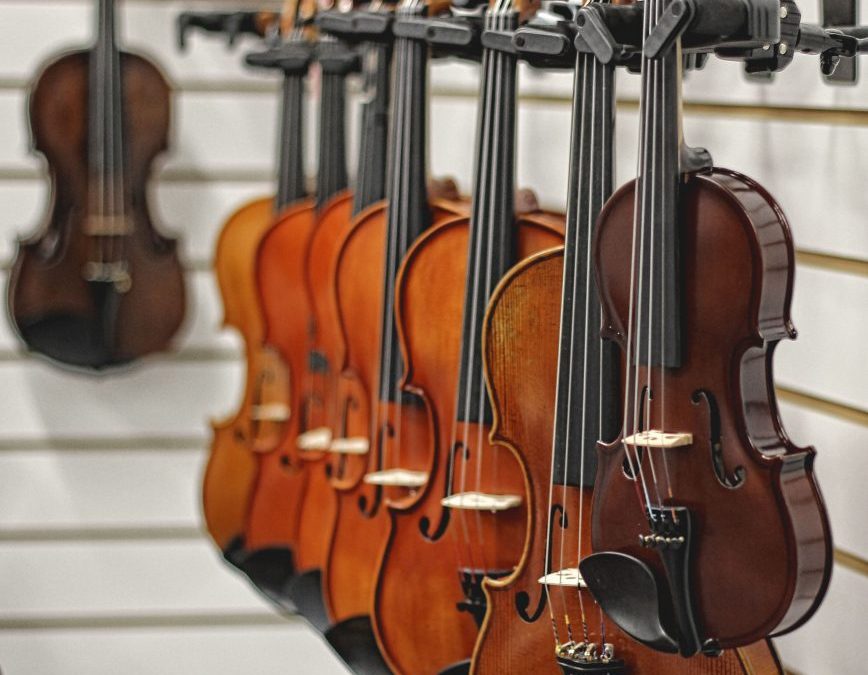
The terms violin and fiddle can be used interchangeably, but there are differences in both the instrument and its use. While “fiddle”, can refer to a wide range of musical instruments and the instrument used by violinists, the term “violin” is for the one that they are used for.
Today’s violins are made with synthetic core strings
The majority of violins used in today’s music are made of synthetic materials. These string types include steel, gut, and composite core. Every string type produces its own tone, and each one has its unique characteristics. Some musicians prefer the warm sound of steel, while others love the rich sound of gut.
The core of a string can be either round or hexagonal. It can also be wrapped in metal or alternative metals. The thickness of the core can affect the projection of the string’s sound. A more soft core will produce a brighter sound. The tone of the instrument and the amount the player wishes to emphasize the sound are the two main factors in choosing a string.
Pure gut strings are still popular among folk musicians. These strings are typically wrapped with silver or aluminum. These strings are less expensive than synthetic ones and produce a warmer, smoother tone. They can be temperamental and need to be tuned regularly. They break down quickly, too.
For violins and fiddles, round bridges
When choosing a round bridge for your violin or fiddle, it’s important to consider the size of the instrument. Generally, the best choice will be one that is made of high quality materials. You should expect it to be strong enough to resist regular tension.
For the most part, violin bridges are made from maple. However, they are also made from walnut, rosewood, or synthetic polymer. They are less durable than maple.
You need to care for your bridge in order to preserve the quality sound of your violin. This can extend the life of your instrument.
The correct placement of your bridge can make a difference in how it sounds. To do this, you need to use a ruler to measure the length of the bridge. The length of the bridge should roughly match that of your fingerboard.
The sound post on your instrument is also a big deal. You can make your instrument sound better by having the right post.
violin vs fiddle
A violin is an instrument that plays classical music. It has four strings and a bow. It’s made from wood, and has a bridge.
The violin has been around for a long time, and the invention of the fiddle is a much more recent development. The Renaissance was the time when it was first invented in Italy. The violin’s precursors were however found in many cultures.
The violin and the fiddle can be played with similar techniques. It is important to keep in mind that there is a lot of difference between them.
Both the violin and fiddle are suitable for folk music. They have been in use for centuries and are often associated with a variety of musical styles, from the classic to the quirky.
A violin and a fiddle can sometimes be confused. Although the two are similar, there are many differences. In addition, the word “fiddle” has a different meaning.
What happens when a rattlesnake is trapped in a violin?
Both violins and fiddles can be described as string instruments. They differ in the way they are played. The difference is in how they are played. Fiddle players often play multiple strings simultaneously, creating drone-like harmonies. This instrument is often used in American rural music.
To repel insects and bad vibes, in the past people used rattles within their fiddles. Originally, this was thought to keep mice and rats out. They would be discouraged by the rattle’s sound.
To protect it from bugs and dust, the instruments were also protected by rattles. These are also made from keratin which is the same substance as fingernails. They absorb ambient moisture as the violin dries. They prevent the development of mud daubers.
A rattle is also great to add rhythm to your fiddle. You can make the instrument vibrate and it will sound more natural. They can also be useful as primitive humidity stabilizers. They will repel bugs, lint, and dust.
Rural America was home to rattlesnake rattles. They were not only used to keep mice and insects away, but also as a rhythm instrument. https://www.youtube.com/embed/gUuCUyzbvt4